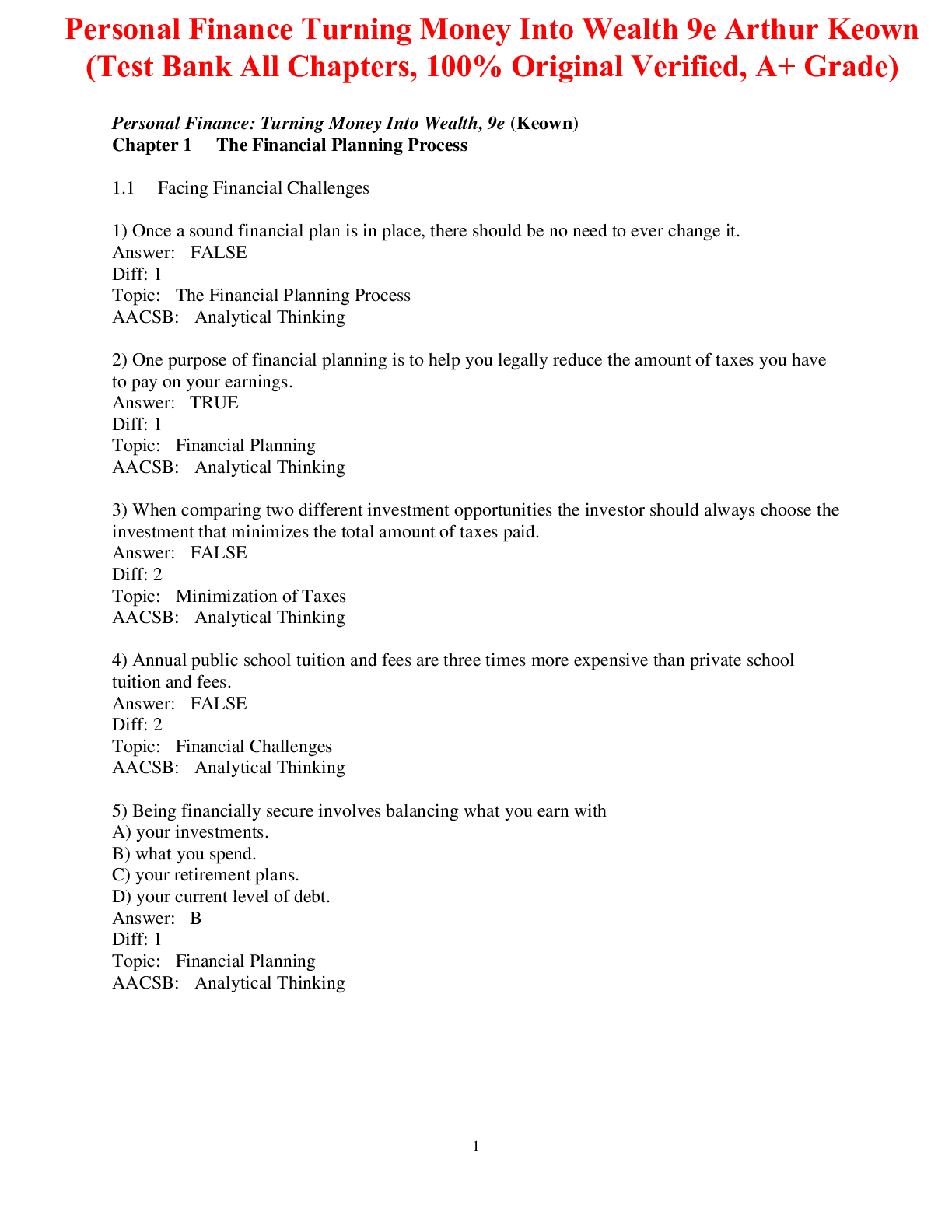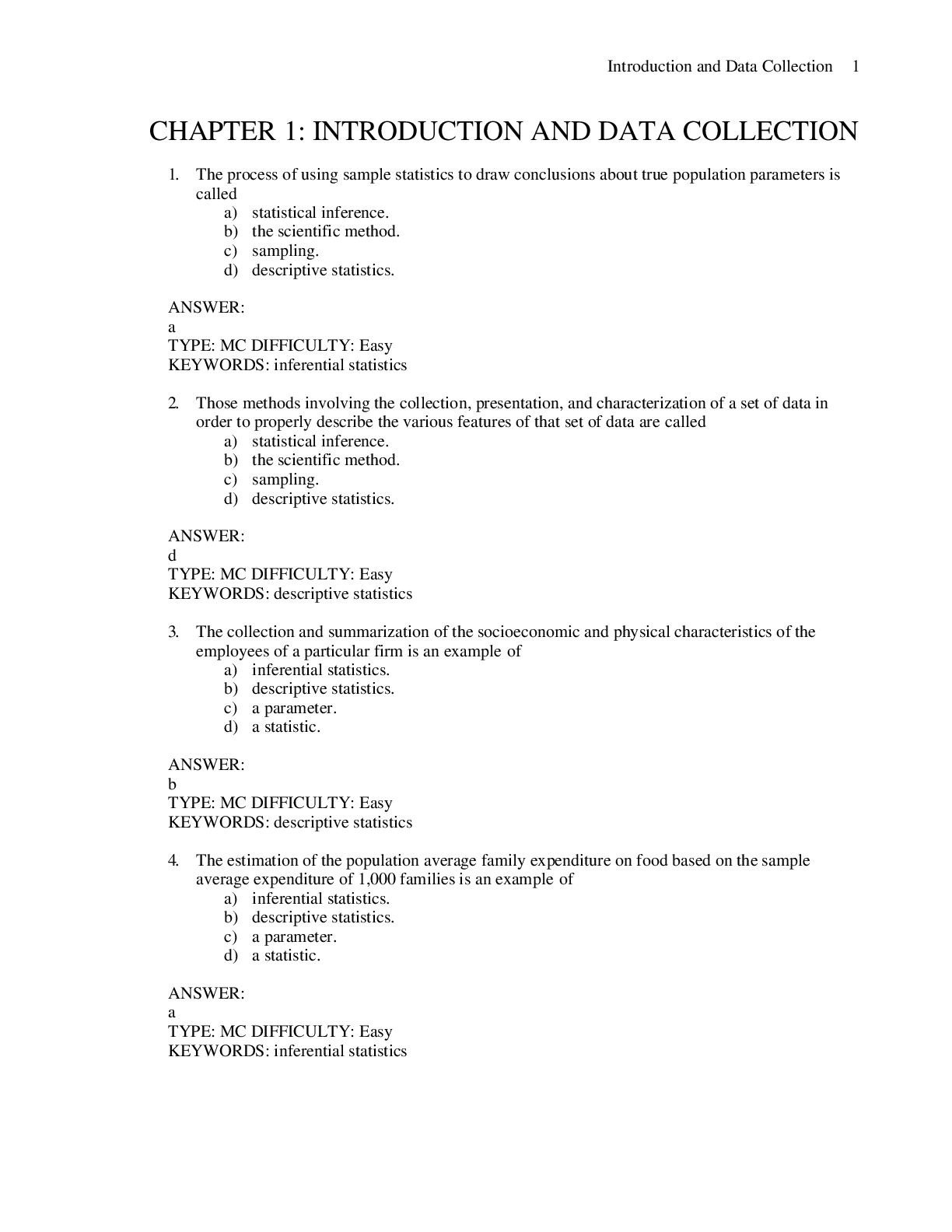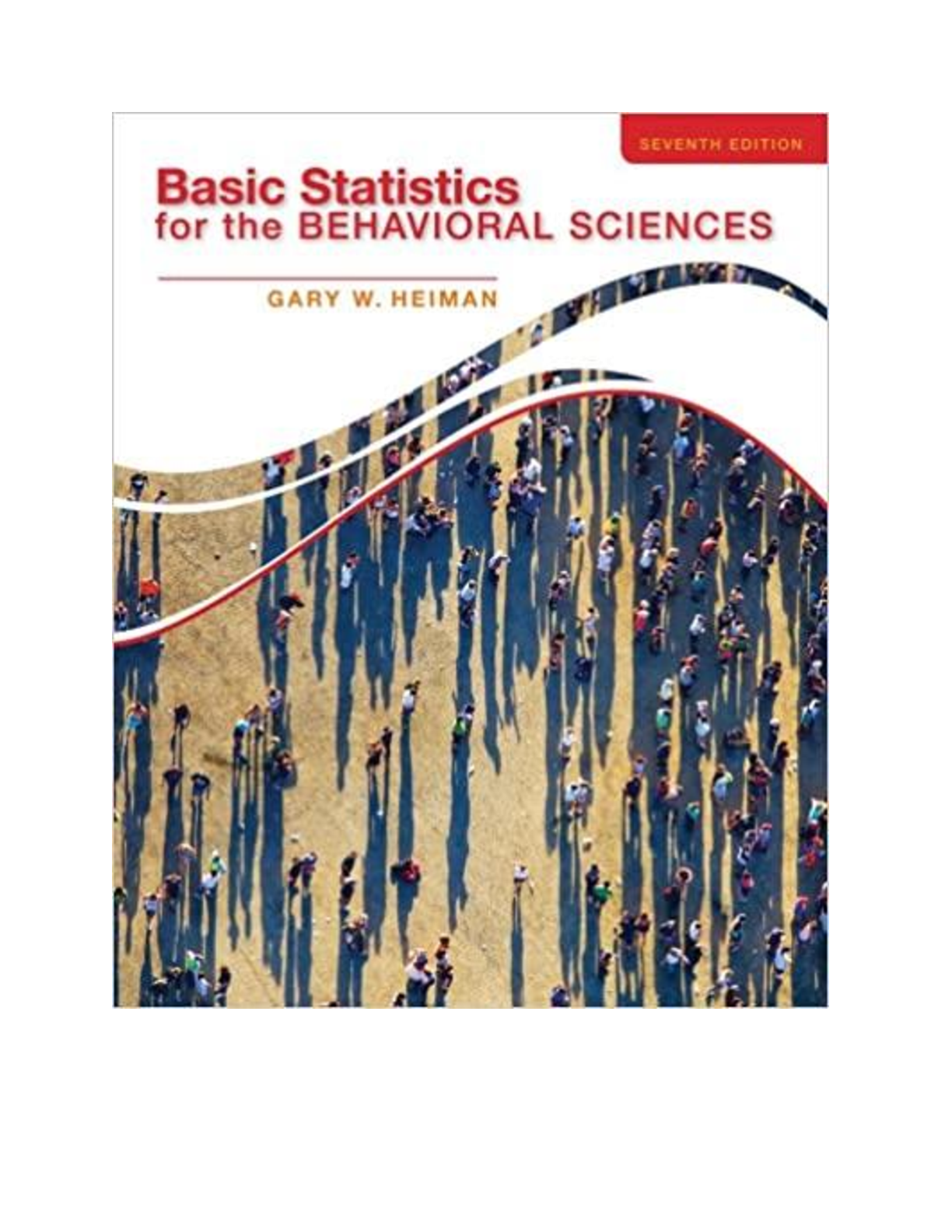Finance > TEST BANK > Personal Finance Turning Money into Wealth, 9th Edition by Keown Test Bank (All)
Personal Finance Turning Money into Wealth, 9th Edition by Keown Test Bank
Document Content and Description Below
Test Bank for Personal Finance Turning Money into Wealth, 9th Edition, 9e by Arthur J. Keown TEST BANK ISBN-13: 9780134730363 Full chapters included Part 1 Financial Planning Chapter 1 The Finan... cial Planning Process Learning Objectives Facing Financial Challenges The Personal Financial Planning Process Step 1: Evaluate Your Financial Health Step 2: Define Your Financial Goals Step 3: Develop a Plan of Action Flexibility Liquidity Protection Minimization of Taxes Step 4: Implement Your Plan Step 5: Review Your Progress, Reevaluate, and Revise Your Plan Establishing Your Financial Goals The Life Cycle of Financial Planning Thinking About Your Career Choosing a Major and a Career Getting a Job Being Successful in Your Career What Determines Your Income? Keeping a Perspective—Money Isn’t Everything Developing Skills for Your Career Lessons from the Recent Economic Downturn Ten Principles of Personal Finance Principle 1: The Best Protection Is Knowledge Principle 2: Nothing Happens Without a Plan Principle 3: The Time Value of Money Principle 4: Taxes Affect Personal Finance Decisions Principle 5: Stuff Happens, or the Importance of Liquidity Principle 6: Waste Not, Want Not—Smart Spending Matters Principle 7: Protect Yourself Against Major Catastrophes Principle 8: Risk and Return Go Hand in Hand Chapter Summaries LO 1 Explain why Personal Financial Planning is So Important Summary LO 2 Describe the Five Basic Steps of Personal Financial Planning Summary Key Terms LO 3 Set Your Financial Goals Summary Key Terms LO 4 Explain how Career Management and Education can Determine Your Income Level Summary LO 5 Identify and Explain how Skills Acquired in This Course will Help You Get a Job and Advance in It Summary LO 6 Explain the Personal Finance Lessons Learned in the Recent Economic Downturn Summary LO 7 List Ten Principles of Personal Finance Summary Key Terms Problems and Activities Chapter 2 Measuring Your Financial Health and Making a Plan Learning Objectives Using a Balance Sheet to Measure Your Wealth Assets: What You Own Monetary Assets Investments Retirement Plans Housing Automobiles Personal Property Other Assets Liabilities: What You Owe Current Debt Long-Term Debt Net Worth: A Measure of Your Wealth Sample Balance Sheet for Larry and Louise Tate Using an Income Statement to Trace Your Money Income: Where Your Money Comes From Expenditures: Where Your Money Goes Preparing an Income Statement: Louise and Larry Tate Using Ratios: Financial Thermometers Question 1: Do I Have Enough Liquidity to Meet Emergencies? Emergency Fund Question 2: Can I Meet My Debt Obligations? Question 3: Am I Saving as Much as I Think I Am? Record Keeping Putting It All Together: Budgeting Developing a Cash Budget Implementing the Cash Budget Hiring a Professional What Planners Do Choosing a Professional Planner How Are Financial Planners Paid? Chapter Summaries LO 1 Calculate your Level of Net Worth or Wealth Using a Balance Sheet Summary Key Terms LO 2 Analyze Where Your Money Comes from and Where it Goes Using an Income Statement Summary Key Terms LO 3 Use Ratios to Identify Your Financial Strengths and Weaknesses Summary Key Terms LO 4 Set Up a Record-Keeping System to Track Your Income and Expenditures Summary LO 5 Implement a Financial Plan or Budget that will Provide for the Level of Savings Needed to Achieve Your Goals Summary LO 6 Decide Whether a Professional Financial Planner will Play a Role in Your Financial Affairs Summary Problems and Activities Chapter 3 Understanding and Appreciating the Time Value of Money Learning Objectives Compound Interest and Future Values How Compound Interest Works The Future-Value Interest Factor The Rule of 72 Compound Interest with Nonannual Periods Using an Online or Handheld Financial Calculator Calculator Apps Compounding and the Power of Time and Interest The Power of Time The Importance of the Interest Rate Present Value—What’s It Worth in Today’s Dollars? Solving for I/Y and N Using a Financial Calculator Annuities Compound Annuities Present Value of an Annuity How the Interest Rate and Time Work Together Amortized Loans Amortized Loans with Monthly Payments Using a Financial Calculator Perpetuities Chapter Summaries LO 1 Explain the Mechanics of Compounding. Summary Key Terms LO 2 Understand the Power of Time and the Importance of the Interest Rate in Compounding. Summary LO 3 Calculate the Present Value of Money to be Received in the Future. Summary Key Terms LO 4 Explain what an Annuity is and Calculate its Compound or Future Value. Summary Key Terms Problems and Activities Appendix Crunchin’ the Numbers—Advanced Topics in Time Value of Money Using the Tables Solving for I/Y and N Using the Tables Chapter 4 Tax Planning and Strategies* Learning Objectives The Federal Income Tax Structure Marginal Versus Average Rates Effective Marginal Tax Rate Capital Gains and Dividend Income Long-Term Capital Gains on Homes Filing Status Cost-of-Living Increases in Tax Brackets, Exemptions, and Deductions Paying Your Income Taxes Other Taxes Other Income-Based Taxes Social Security or FICA State and Local Income Taxes Non-Income-Based Taxes Calculating Your Taxes Step 1: Determining Gross or Total Income Step 2: Calculating Adjusted Gross Income Step 3: Subtracting Deductions Itemized Deductions The Standard Deduction The Choice: Itemizing Deductions or Taking the Standard Deduction Step 4: Claiming Your Exemptions Step 5: Calculating Your Taxable Income and, from That, Calculating Your Base Income Tax Step 6: Subtracting Your Credits and Determining Your Taxes Due Other Filing Considerations Choosing a Tax Form Electronic Filing Free File Filing Late and Amending Returns Filing Late Amending Returns Being Audited Help in Preparing Taxes Model Taxpayers: The Taylors File Their Federal Tax Return Determining Gross or Total Income (line 22) Subtracting Adjustments to Gross or Total Income and Calculating Adjusted Gross Income (line 37) Subtracting Deductions (line 40) Claiming Exemptions (line 42) Calculating Total Tax (line 63) Tax Strategies to Lower Your Taxes Maximize Deductions Using Tax-Deferred Retirement Programs Using Your Home as a Tax Shelter Shifting and Bunching Deductions Look to Capital Gains and Dividend Income Shift Income to Family Members in Lower Tax Brackets Receive Tax-Exempt Income Defer Taxes to the Future Chapter Summaries LO 1 Identify and Understand the Major Federal Income Tax Features that Affect All Taxpayers. Summary Key Terms LO 2 Describe Other Taxes that You Must Pay. Summary Key Terms LO 3 Understand what is taxable income and how taxes are determined. Summary Key Terms LO 4 Choose the Tax form that’s Right for You, File, and Survive an Audit if Necessary. Summary Key Terms LO 5 Calculate Your Income Taxes. Summary LO 6 Minimize your taxes. Summary Key Terms Problems and Activities Part 2 Managing your Money Chapter 5 Cash or Liquid Asset Management Learning Objectives Managing Liquid Assets Automating Savings: Pay Yourself First Financial Institutions “Banks” or Deposit-Type Financial Institutions Nondeposit-Type Financial Institutions Online and Mobile Banking What to Look for in a Financial Institution Cash Management Alternatives Checking Accounts Savings Accounts Money Market Deposit Accounts Certificates of Deposit Money Market Mutual Funds Asset Management Accounts U.S. Treasury Bills, or T-Bills U.S. Savings Bonds Comparing Cash Management Alternatives Comparable Interest Rates Tax Considerations Safety Federal Deposit Insurance Money Market Mutual Funds Establishing and Using a Checking Account Choosing a Financial Institution The Cost Factor Monthly Fee Minimum Balance Charge per Check Balance-Dependent Scaled Fees The Convenience Factor Safety-Deposit Boxes Overdraft Protection The Consideration Factor Balancing Your Checking Account Other Types of Checks Cashier’s Check Certified Check Money Order Traveler’s Checks Electronic Funds Transfers Automated Teller Machines Debit Cards Smart Cards Prepaid Debit or Gift Cards Fixing Mistakes—Theirs, Not Yours Chapter Summaries LO 1 Manage Your Cash and Understand Why you Need Liquid Assets Summary Key Terms LO 2 Automate Your Savings Summary LO 3 Choose from among the Different Types of Financial Institutions that Provide Cash Management Services Summary Key Terms LO 4 Compare the Various Cash Management Alternatives Summary Key Terms LO 5 Compare Rates on the Different Liquid Investment Alternatives Summary Key Terms LO 6 Establish and Use a Checking Account Summary Key Terms LO 7 Transfer Funds Electronically and Understand how Electronic Funds Transfers (EFTs) Work Summary Key Terms Problems and Activities Chapter 6 Using Credit Cards: The Role of Open Credit Learning Objectives A First Look at Credit Cards and Open Credit Interest Rates Calculating the Balance Owed Buying Money: The Cash Advance Grace Period Annual Fee Additional Fees The Pros and Cons of Credit Cards The Advantages of Credit Cards The Drawbacks of Credit Cards What the CARD Act Means for You Choosing a Source of Open Credit Bank Credit Cards Bank Credit Card Variations Travel and Entertainment Cards Single-Purpose Cards Traditional Charge Accounts The Choice: What’s Best for You Getting a Credit Card Credit Evaluation: The Five Cs of Credit The Key to Getting Credit: Your Credit Score Determining Creditworthiness Your Credit Score How Your Credit Score Is Computed—FICO and VantageScore What’s in Your Credit Report The Factors That Determine Your Credit Score Monitoring Your Credit Score Consumer Credit Rights The Credit Bureau and Your Rights If Your Credit Card Application Is Rejected Resolving Billing Errors The Consumer Financial Protection Bureau Identity Theft How Do You Know If You’re a Victim of Identity Theft? Controlling and Managing Your Credit Cards and Open Credit Reducing Your Balance Protecting Against Fraud Trouble Signs in Credit Card Spending If You Can’t Pay Your Credit Card Bills Chapter Summaries LO 1 Know how Credit Cards Work. Summary Key Terms LO 2 Understand the Costs of Credit. Summary LO 3 Describe the Different Types of Credit Cards. Summary Key Terms LO 4 Know What Determines Your Credit Card Worthiness and How to Secure a Credit Card. Summary Key Terms LO 5 Manage Your Credit Cards and Open Credit. Summary Problems and Activities Chapter 7 Student and Consumer Loans: The Role of Planned Borrowing Learning Objectives Consumer Loans—Your Choices First Decision: Single-Payment Versus Installment Loans Second Decision: Secured Versus Unsecured Loans Third Decision: Variable-Rate Versus Fixed-Rate Loans Fourth Decision: The Loan’s Maturity—Shorter- Versus Longer-Term Loans Understand the Terms of the Loan: The Loan Contract Insurance Agreement Clause Acceleration Clause Deficiency Payments Clause Recourse Clause Special Types of Consumer Loans Home Equity Loans Advantages of Home Equity Loans Disadvantages and Dangers of Home Equity Loans Automobile Loans Cost and Early Payment of Consumer Loans Cost of Single-Payment Loans Simple Interest Method Discount Method Payday Loans—A Dangerous Kind of Single-Payment Loan Cost of Installment Loans Simple Interest Method Add-On Method Early Payment of an Add-On Loan Getting the Best Rate on Your Consumer Loans Inexpensive Sources More Expensive Sources Most Expensive Sources Keys to Getting the Best Rate Should You Borrow or Pay Cash? Controlling Your Use of Debt Debt Limit Ratio Debt Resolution Rule Controlling Consumer Debt What to Do If You Can’t Pay Your Bills Go to Your Creditor Go to a Credit Counselor Other Options Bankruptcy as the Last Resort Chapter 13: The Wage Earner’s Plan Chapter 7: Straight Bankruptcy Student Loans and Paying for College So Many Choices—Schools and Majors Borrowing Less and Borrowing Smarter Paying for Your College Education Borrowing Money—Federal Student Loans and Private Loans Compare Financial Aid and College Costs Manage Your Money Responsibly Repaying Your Loans Repayment Plans Deferment Forbearance Chapter Summaries LO 1 Understand the Various Consumer Loans. Summary Key Terms LO 2 Calculate the Cost of a Consumer Loan. Summary Key Terms LO 3 Pick an Appropriate Source for Your Loan. Summary LO 4 Control Your Debt. Summary Key Terms LO 5 Understand the alternatives for financing your college education. Summary Key Terms Problems and Activities Chapter 8 The Home and Automobile Decision Learning Objectives Smart Buying Step 1: Differentiate Want from Need Step 2: Do Your Homework Step 3: Make Your Purchase Step 4: Maintain Your Purchase Smart Buying in Action: Buying a Vehicle Step 1: Differentiate Want from Need Step 2: Do Your Homework How Much Can You Afford? Which Vehicle Is Right for You? Step 3: Make Your Purchase Financing Alternatives Step 4: Maintain Your Purchase Smart Buying in Action: Housing Your Housing Options Houses Cooperatives and Condominiums Apartments and Other Rental Housing Step 1: Differentiate Want from Need Step 2: Do Your Homework One-Time Costs Recurring Costs Maintenance and Operating Costs Renting Versus Buying Determining What You Can Afford Financing the Purchase—The Mortgage Conventional and Government-Backed Mortgages Fixed-Rate Mortgages Adjustable-Rate Mortgages Initial Rate Interest Rate Index Margin Adjustment Interval Rate Cap Payment Cap ARM Innovations Adjustable-Rate Versus Fixed-Rate Mortgages Specialty Mortgage Options Balloon Payment Mortgages Graduated Payment Mortgages Growing Equity Mortgages Shared Appreciation Mortgages Interest-Only Mortgages Option Payment ARM Mortgages Risks Associated with Specialty Mortgages A Word of Warning: Beware of Subprime Mortgages and Predatory Lending Mortgage Decisions: Length or Term of the Loan Coming Up with the Down Payment Prequalifying Step 3: Make Your Purchase The Contract Step 4: Maintain Your Purchase Chapter Summaries LO 1 Make Good Buying Decisions. Summary LO 2 Choose a Vehicle that Suits Your Needs and Budget. Summary Key Terms LO 3 Choose Housing that Meets Your Needs. Summary Key Terms LO 4 Decide Whether to Rent or Buy Housing. Summary LO 5 Calculate the Costs of Buying a Home. Summary LO 6 Get the Most Out of Your Mortgage. Summary Key Terms Problems and Activities Appendix Crunchin’ the Numbers— Calculations for Figure 8.6 Part 3 Protecting Yourself with Insurance Chapter 9 Life and Health Insurance Learning Objectives The Importance of Insurance Why Are Health and Life Insurance So Important? Why Is Health Care So Costly? What Do These High Costs Mean for You? What About Those Who Have No Health Insurance? Determining Your Life Insurance Needs Do You Need Life Insurance? How Much Life Insurance Do You Need? Earnings Multiple Approach Needs Approach Major Types of Life Insurance Term Insurance and Its Features Renewable Term Insurance Decreasing Term Insurance Group Term Insurance Credit or Mortgage Group Life Insurance Convertible Term Life Insurance Cash-Value Insurance and Its Features Whole Life Insurance and Its Features Universal Life Insurance and Its Features Variable Life Insurance and Its Features Term Versus Cash-Value Life Insurance Fine-Tuning Your Policy: Contract Clauses, Riders, and Settlement or Payout Options Contract Clauses Beneficiary Provision Coverage Grace Period Loan Clause Nonforfeiture Clause Policy Reinstatement Clause Change of Policy Clause Suicide Clause Payment Premium Clause Incontestability Clause Riders Waiver of Premium for Disability Rider Accidental Death Benefit Rider or Multiple Indemnity Guaranteed Insurability Rider Cost-of-Living Adjustment (COLA) Rider Living Benefits Rider Settlement or Payout Options Lump-Sum Settlement Interest-Only Settlement Installment-Payments Settlement Life Annuity Settlement Buying Life Insurance Selecting an Agent Comparing Costs Making a Purchase Health Insurance 2010 Health-Care Reform—Patient Protection and Affordable Care Act Basic Health Insurance Hospital Insurance Surgical Insurance Physician Expense Insurance Major Medical Expense Insurance Dental and Eye Insurance Basic Health-Care Choices Private Health-Care Plans Fee-for-Service or Traditional Indemnity Plans Managed Health-Care Plans Managed Health Care: HMOs Managed Health Care: PPOs Group Versus Individual Health Insurance Government-Sponsored Health-Care Plans Workers’ Compensation Medicare Medigap Plans Medicaid Controlling Health-Care Costs Flexible Spending Accounts Health Savings Accounts COBRA and Changing Jobs What About Choosing Not to Be Insured? What to Look for in a Health Insurance Plan Who’s Covered? Terms of Payment Exclusions Choosing an Insurance Plan Disability Insurance Sources of Disability Insurance How Much Disability Coverage Should You Have? Disability Features That Make Sense Definition of Disability Residual or Partial Payments When Returning to Work Part-Time Benefit Duration Waiting (or Elimination) Period Waiver of Premium Noncancellable Rehabilitation Coverage Long-Term Care Insurance Chapter Summaries LO 1 Understand the Importance of Insurance. Summary Key Term LO 2 Determine your Life Insurance Needs and Design a Life Insurance Program. Summary Key Terms LO 3 Describe the Major Types of Coverage Available and the Typical Provisions that are Included. Summary Key Terms LO 4 Design a Health-Care Insurance Program and Understand what Provisions are Important to You. Summary Key Terms LO 5 Describe Disability Insurance and the Choices Available to You. Summary Key Terms LO 6 Explain the Purpose of Long-Term Care Insurance and the Provisions that Might be Important to You. Summary Key Term Problems and Activities Chapter 10 Property and Liability Insurance Learning Objectives Protecting Your Home Packaged Policies: HOs Section I: Property Coverage Section II: Personal Liability Coverage Supplemental Coverage Personal Articles Floaters Earthquake Coverage Flood Protection Inflation Guard Personal Property Replacement Cost Coverage Added Liability Insurance Your Insurance Needs Coinsurance and the “80 Percent Rule” The Bottom Line Keeping Your Costs Down—Insurance Credit Scoring Keeping Your Costs Down—Discounts and Savings Making Your Coverage Work Automobile Insurance Personal Automobile Policy PAP Part A: Liability Coverage PAP Part B: Medical Expenses Coverage PAP Part C: Uninsured Motorist’s Protection Coverage PAP Part D: Damage to Your Automobile Coverage Exclusions No-Fault Insurance Buying Automobile Insurance Determinants of the Cost of Automobile Insurance Keeping Your Costs Down Filing a Claim Chapter Summaries LO 1 Understand, Buy, and Maintain Homeowner’s Insurance in a Cost-Effective Way Summary Key Terms LO 2 Protect your Property Effectively while Keeping your Costs Down Summary Key Terms LO 3 Manage your Insurance Summary LO 4 Pick Out the Right Auto Insurance and File a Claim Summary Key Terms Problems and Activities Part 4 Managing Your Investments Chapter 11 Investment Basics Learning Objectives Before You Invest Investing Versus Speculating Setting Investment Goals Financial Reality Check Starting Your Investment Program Pay Yourself First Make Investing Automatic Take Advantage of Uncle Sam and Your Employer Windfalls Make 2 Months a Year Investment Months Fitting Taxes into Investing Investment Choices Lending Investments Ownership Investments The Returns from Investing A Look at Risk–Return Trade-Offs Nominal and Real Rates of Return Historical Levels of Risk and Return Sources of Risk in the Risk–Return Trade-Off Interest Rate Risk Inflation Risk Business Risk Financial Risk Liquidity Risk Market Risk Political and Regulatory Risk Exchange Rate Risk Call Risk Diversification Diversifying Away Risk Understanding Your Tolerance and Capacity for Risk The Time Dimension of Investing and Asset Allocation Meeting Your Investment Goals and the Time Dimension of Risk Asset Allocation What You Should Know About Efficient Markets Securities Markets Primary Markets Secondary Markets—Stocks The New York Stock Exchange Over-the-Counter Market The Rise of Electronic Trading International Markets Regulation of the Securities Markets SEC Regulation Self-Regulation Insider Trading and Market Abuses How Securities Are Traded Placing an Order Order Size Time Period for Which the Order Will Remain Outstanding Types of Orders Market Orders Limit Orders Stop Orders Short Selling Dealing with Brokers Brokerage Accounts Cash Versus Margin Accounts Joint Accounts Choosing a Broker Using a Full-Service Broker Using a Discount/Online Broker Making the Decision Online Trading Sources of Investment Information Corporate Sources Brokerage Firm Reports The Press Investment Advisory Services Internet Sources Chapter Summaries LO 1 Set Your Goals and Be Ready to Invest Summary Key Terms LO 2 Manage Risk in Your Investments Summary Key Terms LO 3 Allocate Your Assets in the Manner that is Best for You Summary Key Term LO 4 Understand how Difficult it is to Beat the Market Summary Key Term LO 5 Identify and Describe the Primary and Secondary Securities Markets Summary Key Terms LO 6 Trade Securities Using a Broker Summary Key Terms LO 7Locate and Use Several Different Sources of Investment Information to Trade Securities Summary Problems and Activities Chapter 12 Investing in Stocks Learning Objectives Why Consider Stocks? The Language of Common Stocks Limited Liability Claims on Income Claims on Assets Voting Rights Stock Splits Stock Repurchases Book Value Earnings per Share Dividend Yield Market-to-Book or Price-to-Book Ratio Classification of Stocks Stock Indexes and Quotes The Dow The S&P 500 and Other Indexes Market Movements Reading Stock Quotes Online and in the Newspaper Valuation of Common Stock Fundamental and Technical Analysis Approaches The Price/Earnings Ratio Approach SWOT Analysis Stock Investment Strategies Dollar Cost Averaging Buy-and-Hold Strategy Dividend Reinvestment Plans As an Investor, What Should You Know? Risks Associated with Common Stocks Another Look at Principle 8: Risk and Return Go Hand in Hand Chapter Summaries LO 1 Invest in Stocks. Summary Key Terms LO 2 Read Stock Quotes Online or in the Newspaper. Summary Key Terms LO 3 Understand how Stocks are Valued and what Causes them to Go Up and Down in Price. Summary Key Terms LO 4 Employ Different Investment Strategies. Summary Key Terms LO 5 Understand the Risks Associated with Investing in Common Stock. Summary Key Term Problems and Activities Chapter 13 Investing in Bonds and Other Alternatives Learning Objectives Why Consider Bonds? Basic Bond Terminology and Features Par Value Coupon Interest Rate Indenture Call Provision Sinking Fund Types of Bonds Corporate Bonds Secured Corporate Debt Unsecured Corporate Debt Treasury and Agency Bonds Pass-Through Certificates Treasury Inflation-Protected Securities (TIPS) U.S. Series EE Bonds I Bonds Municipal Bonds Special Situation Bonds Zero Coupon Bonds Junk Bonds Evaluating Bonds Bond Ratings—A Measure of Riskiness Bond Yield Current Yield Yield to Maturity Equivalent Taxable Yield on Municipal Bonds Valuation Principles Bond Valuation Why Bonds Fluctuate in Value What Bond Valuation Relationships Mean to the Investor Reading Online Corporate Bond Quotes Preferred Stock—An Alternative to Bonds Features and Characteristics of Preferred Stock Multiple Issues Cumulative Feature Adjustable Rate Convertibility Callability Valuation of Preferred Stock Risks Associated with Preferred Stock Investing in Real Estate Direct Investments in Real Estate Indirect Investments in Real Estate Investing in Real Estate: The Bottom Line Investing—Speculating—in Gold, Silver, Gems, and Collectibles Chapter Summaries LO 1 Invest in the Bond Market. Summary LO 2 Understand Basic Bond Terminology and Compare the Various Types of Bonds. Summary Key Terms LO 3 Calculate the Value of a Bond and Understand the Factors that Cause Bond Value to Change. Summary Key Terms LO 4 Compare Preferred Stock to Bonds as an Investment Option. Summary Key Terms LO 5 Understand the Risks Associated with Investing in Real Estate. Summary LO 6 Know Why you shouldn’t Invest in Gold, Silver, Gems, or Collectibles. Summary Problems and Activities Chapter 14 Mutual Funds and Exchange Traded Funds: An Easy Way to Diversify Learning Objectives Why Invest in Mutual Funds? Advantages of Mutual Fund Investing Disadvantages of Mutual Fund Investing Mutual Fund-Amentals Investment Companies Open-End Mutual Funds Closed-End Mutual Funds Exchange Traded Funds Unit Investment Trusts Real Estate Investment Trusts Hedge Funds—Something to Avoid Calculating Mutual Fund Costs and Returns Load Versus No-Load Funds Management Fees and Expenses 12b-1 Fees Calculating Mutual Fund Returns Types and Objectives of Mutual Funds Money Market Mutual Funds Stock Mutual Funds Aggressive Growth Funds Small Company Growth Funds Growth Funds Growth-and-Income Funds Sector Funds Index Funds International Funds Balanced Mutual Funds Asset Allocation Funds Life Cycle and Target Retirement Funds Bond Funds U.S. Government Bond Funds and GNMA Bond Funds Municipal Bond Funds Corporate Bond Funds Bond Funds and Their Maturities Mutual Fund Services Automatic Investment and Withdrawal Plans Automatic Reinvestment of Interest, Dividends, and Capital Gains Wiring and Funds Express Options Online and Phone Switching Easy Establishment of Retirement Plans Check Writing Bookkeeping and Help with Taxes Buying a Mutual Fund Step 1: Determining Your Goals Step 2: Meeting Your Objectives Step 3: Selecting a Fund Where to Look—Sources of Information Internet Screening to Find the Right Mutual Fund Step 4: Making the Purchase Buying Direct Buying Through a Mutual Fund Supermarket Chapter Summaries LO 1 Weigh the Advantages and Disadvantages of Investing in Mutual Funds. Summary Key Term LO 2 Differentiate among Types of Mutual Funds, ETFs, and Investment Trusts. Summary Key Terms LO 3 Calculate Mutual Fund Returns. Summary Key Terms LO 4 Classify Mutual Funds According to Objectives. Summary Key Terms LO 5 Select a Mutual Fund that’s Right for You. Summary Key Term Problems and Activities Part 5 Life Cycle Issues Chapter 15 Retirement Planning Learning Objectives Social Security and Employer-Funded Pensions Financing Social Security Eligibility Retirement Benefits Disability and Survivor Benefits Employer-Funded Pensions Defined-Benefit Plans Cash-Balance Plans: The Latest Twist in Defined-Benefit Plans Plan Now, Retire Later Step 1: Set Goals Step 2: Estimate How Much You Will Need Step 3: Estimate Income at Retirement Step 4: Calculate the Annual Inflation-Adjusted Shortfall Step 5: Calculate How Much You Will Need to Cover This Shortfall Step 6: Determine How Much You Must Save Annually Between Now and Retirement Step 7: Put the Plan in Play and Save What Plan Is Best for You? Retirement Plans in Addition to Social Security and Employer-Funded Pensions Employer-Sponsored Retirement Plans Defined-Contributions Plans Profit-Sharing Plans Money Purchase Plans Thrift and Savings Plans Employee Stock Ownership Plans 401(k) Plans Retirement Plans for the Self-Employed and Small-Business Employees Keogh Plans or Self-Employed Retirement Plans Simplified Employee Pension Plans Savings Incentive Match Plans for Employees Individual Retirement Arrangements Traditional IRAs Saver’s Tax Credit Roth IRAs Traditional Versus Roth IRA: Which Is Best for You? Saving for College: Coverdell Education Savings Accounts Facing Retirement—The Payout An Annuity, or Lifetime Payments A Single Life Annuity An Annuity for Life or a “Certain Period” A Joint and Survivor Annuity A Lump-Sum Payment Tax Treatment of Distributions Putting a Plan Together and Monitoring It Saving for Retirement—Let’s Postpone Starting for 1 Year Chapter Summaries LO 1 Understand the Changing Nature of Retirement Planning. Summary Key Terms LO 2 Set up a Retirement Plan. Summary LO 3 Understand how Different Retirement Plans Work. Summary Key Terms LO 4 Choose how Your Retirement Benefits are Paid Out to You. Summary Key Terms LO 5 Put Together a Retirement Plan and Effectively Monitor It. Summary Problems and Activities Appendix Crunchin’ the Numbers—Funding Your Retirement Needs Step 1: Set Goals Step 2: Estimate How Much You Will Need Step 3: Estimate Income at Retirement Step 4: Calculate the Annual Inflation-Adjusted Shortfall Step 5: Calculate How Much You Will Need to Cover This Shortfall Step 6: Determine How Much You Must Save Annually Between Now and Retirement Step 7: Put the Plan in Play and Save Chapter 16 Estate Planning: Saving Your Heirs Money and Headaches Learning Objectives The Estate Planning Process Step 1: Determine the Value of Your Estate Step 2: Choose Your Heirs and Decide What They Receive Step 3: Determine the Cash Needs of the Estate Step 4: Select and Implement Your Estate Planning Techniques Understanding and Avoiding Estate Taxes The Portability Feature—Passing on Credit to the Surviving Spouse Gift Taxes Unlimited Marital Deduction The Generation-Skipping Transfer Tax Calculating Estate Taxes [Show More]
Last updated: 8 months ago
Preview 1 out of 639 pages
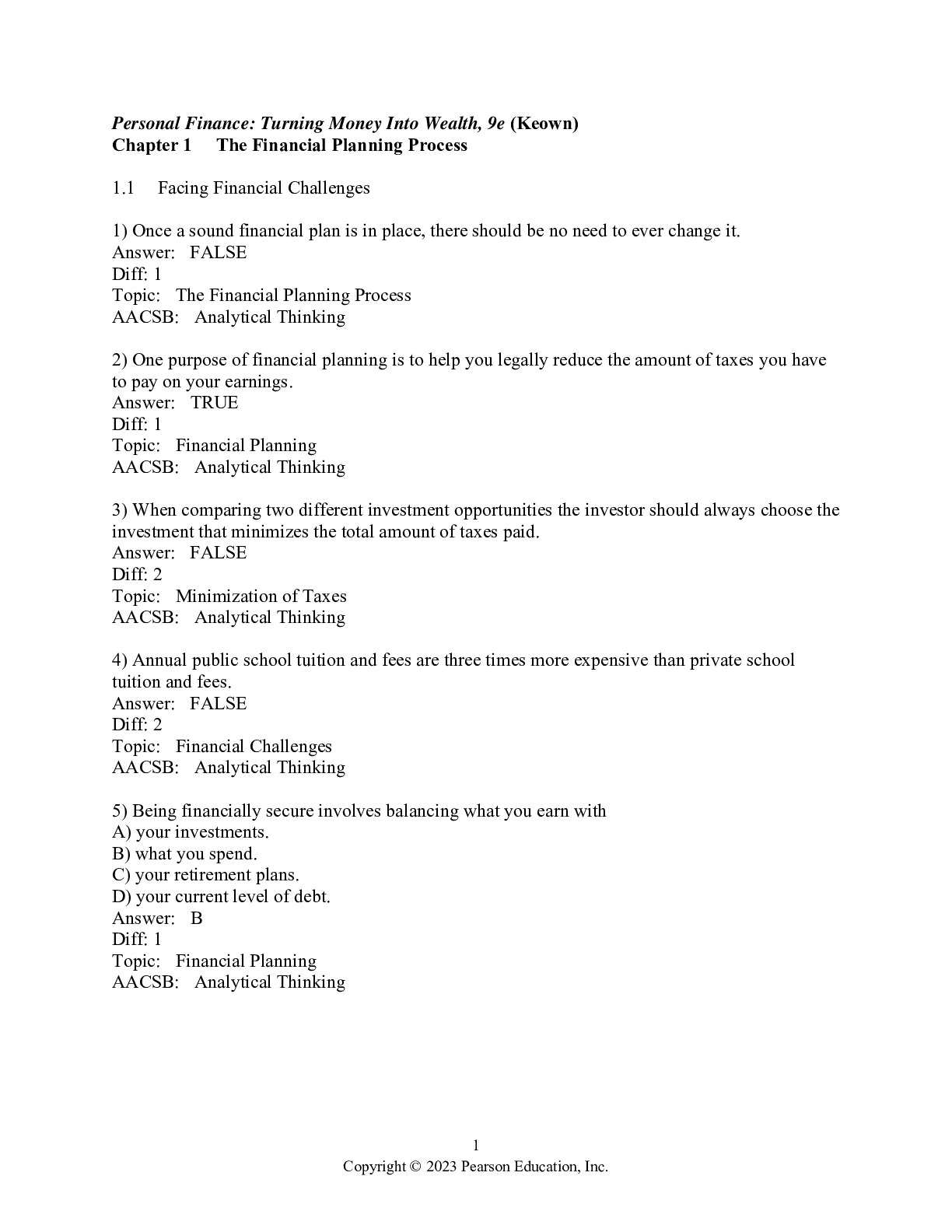
Reviews( 0 )
Document information
Connected school, study & course
About the document
Uploaded On
Aug 27, 2022
Number of pages
639
Written in
Additional information
This document has been written for:
Uploaded
Aug 27, 2022
Downloads
0
Views
147



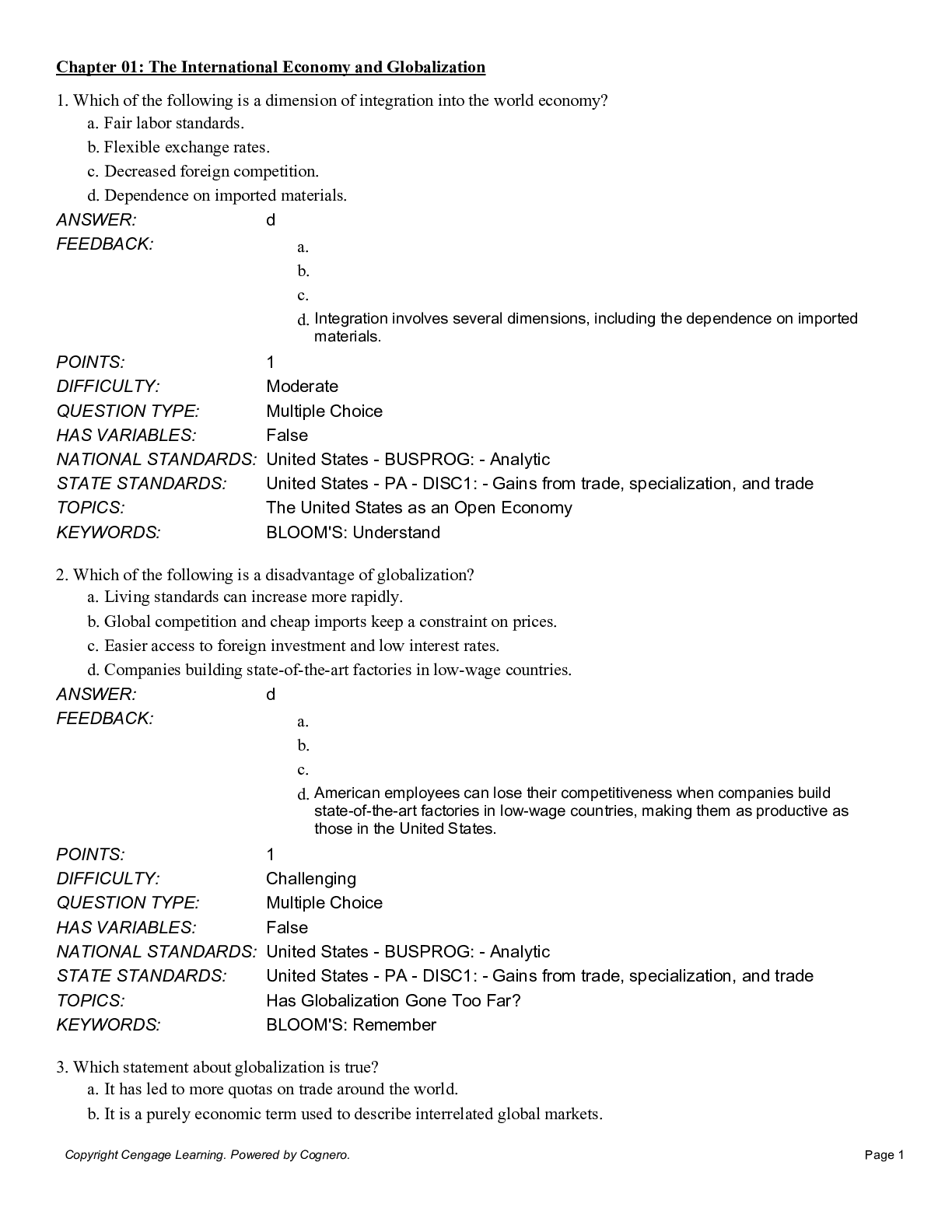
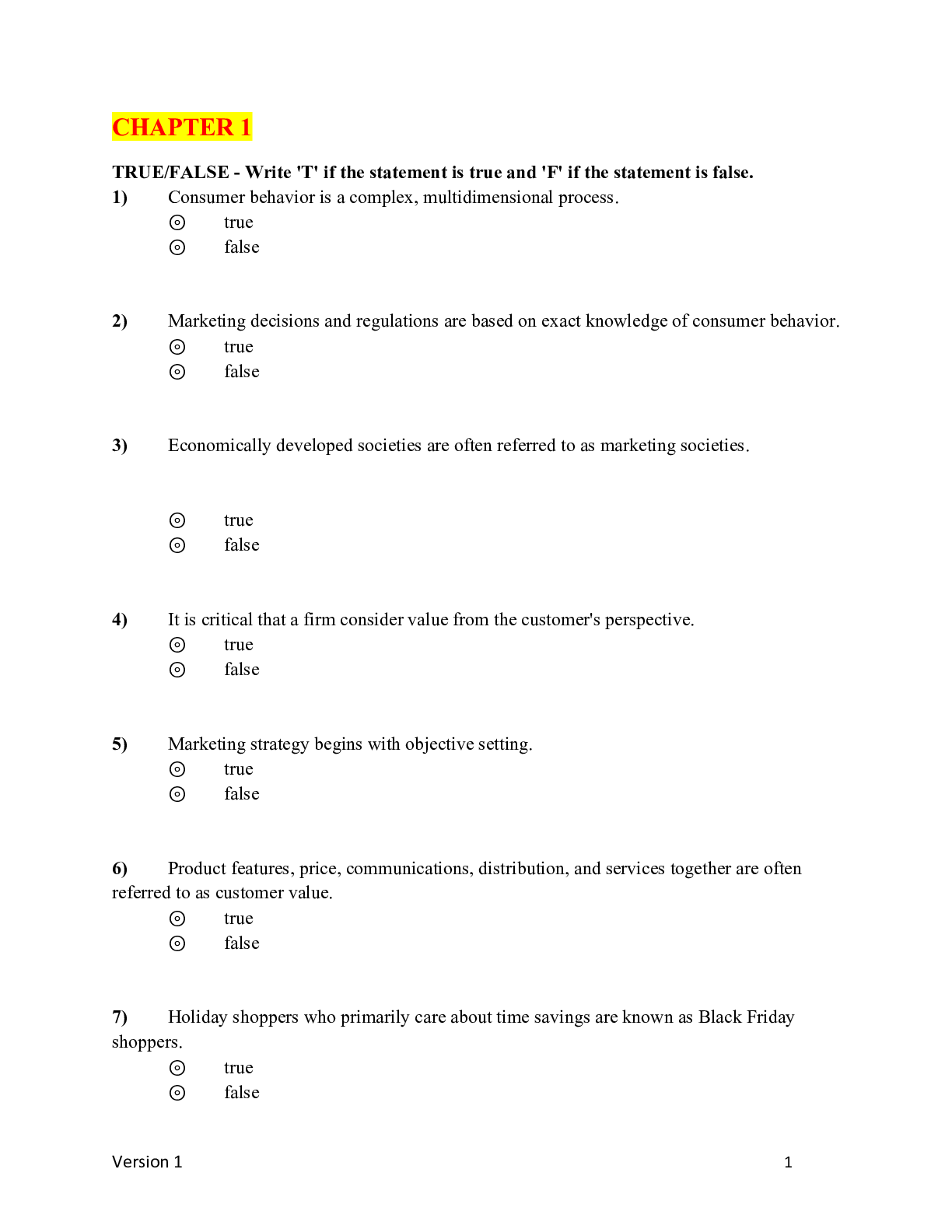
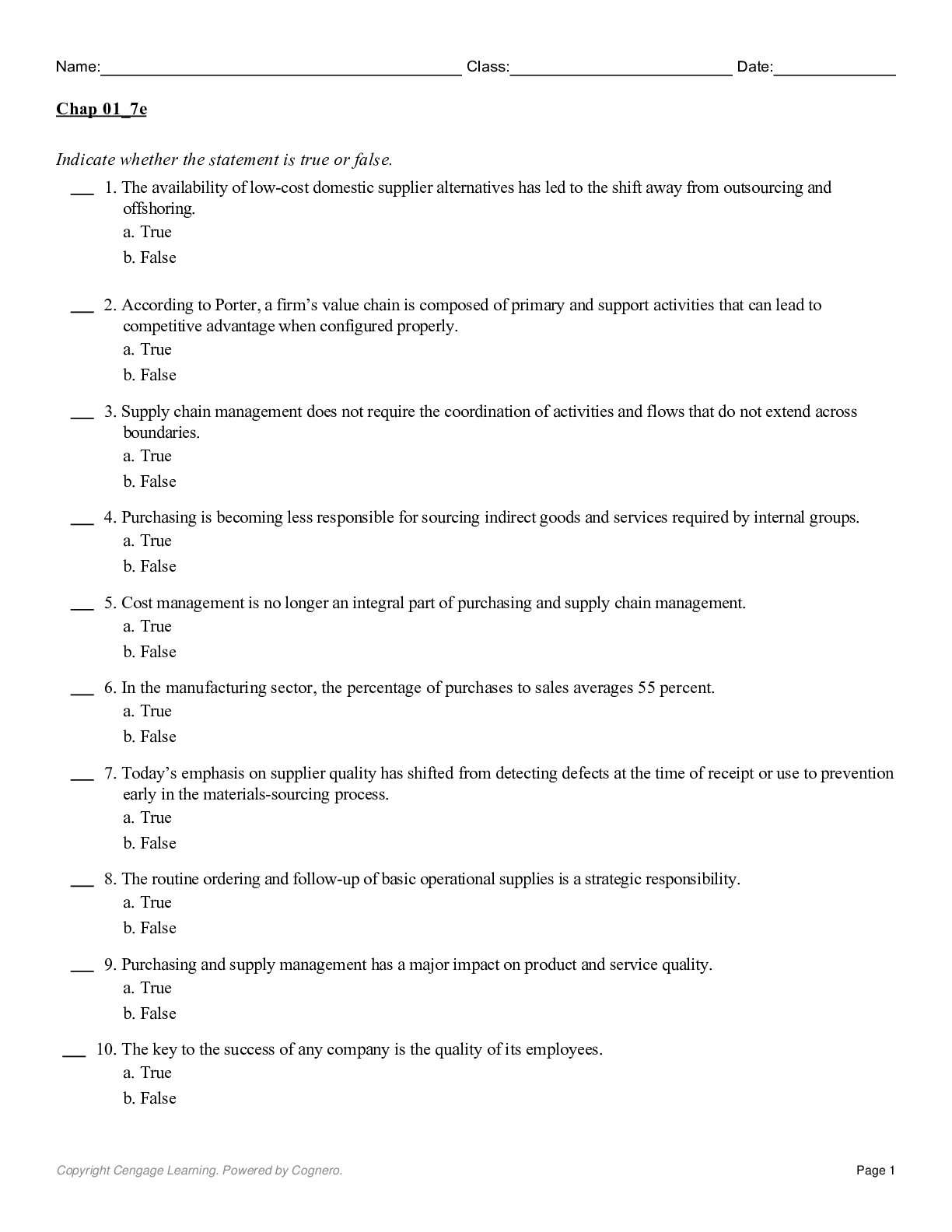
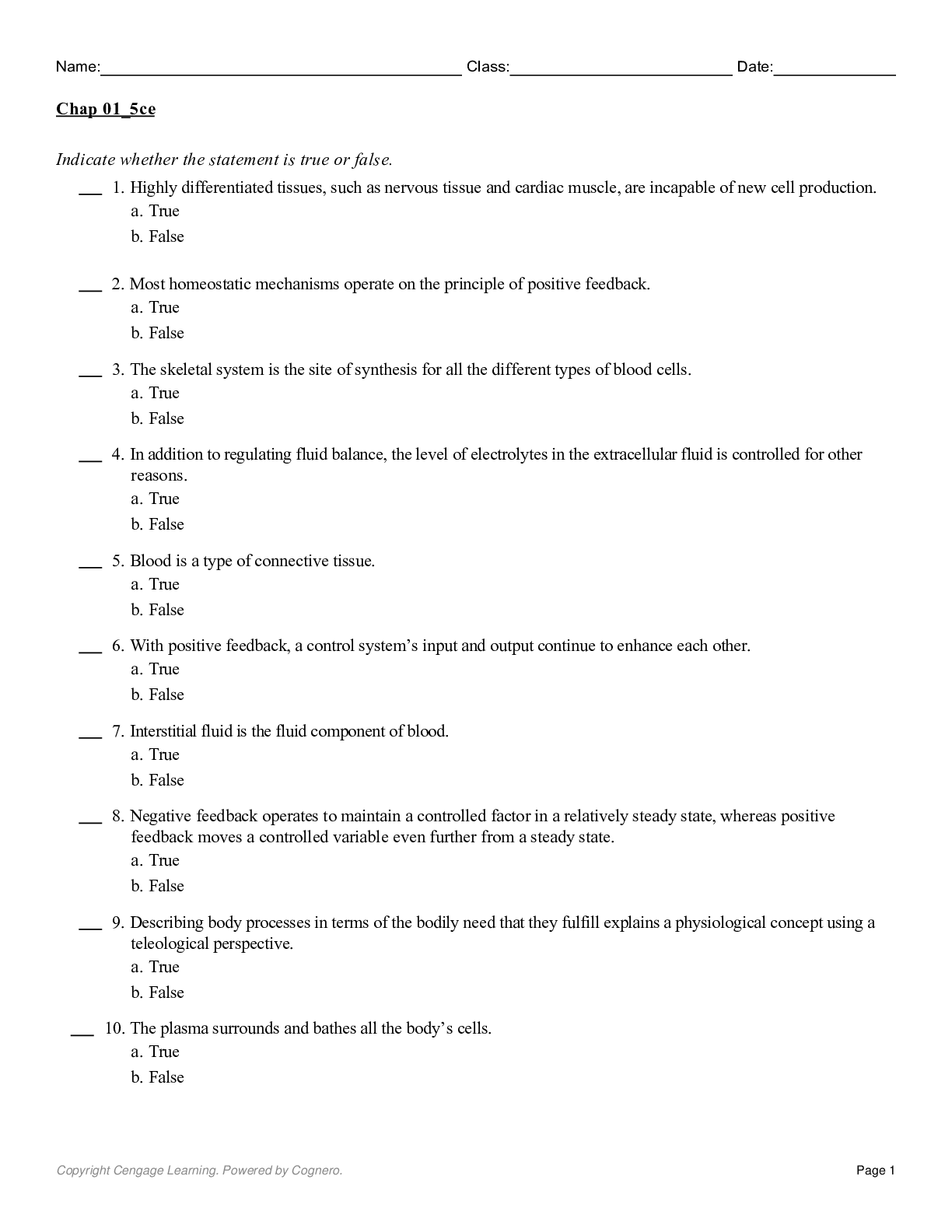

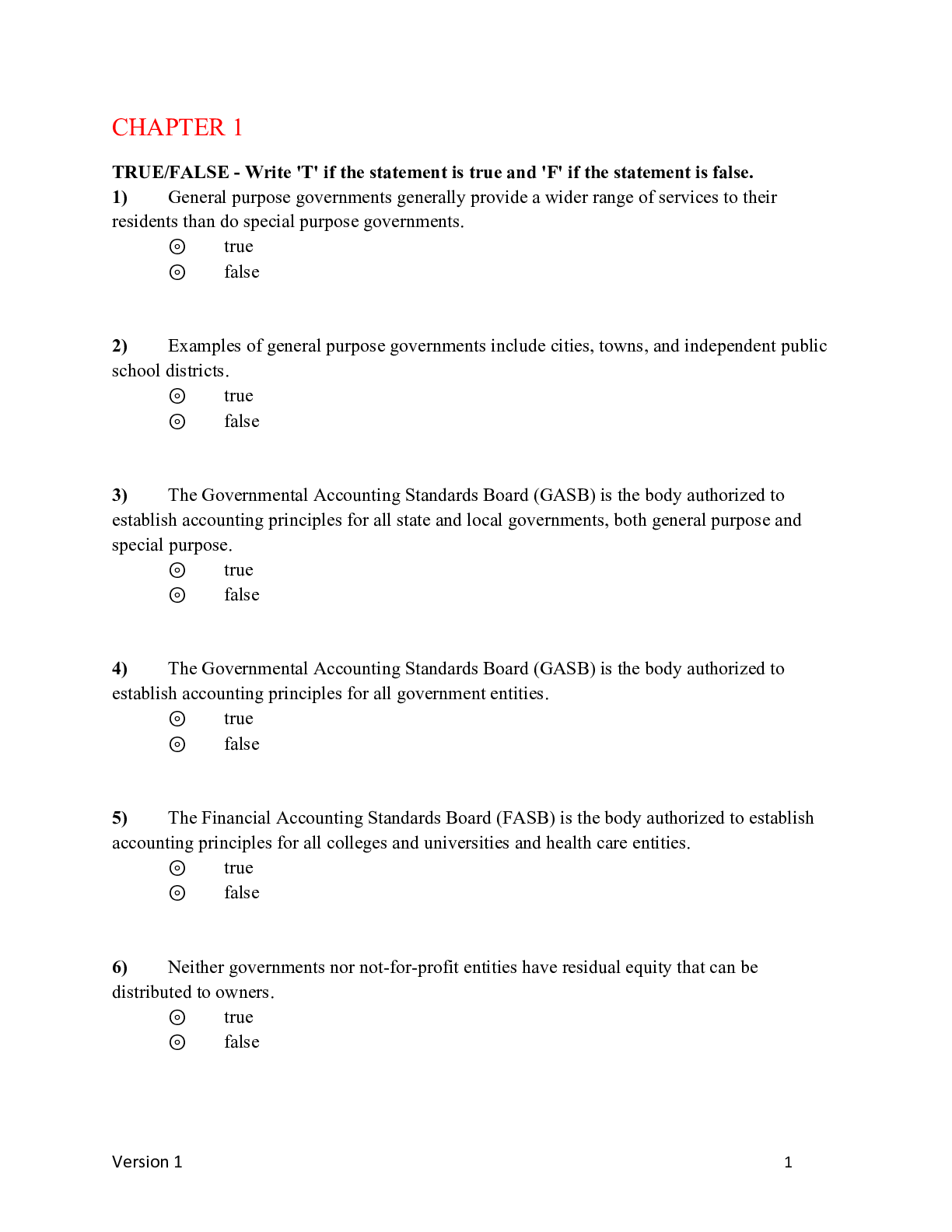
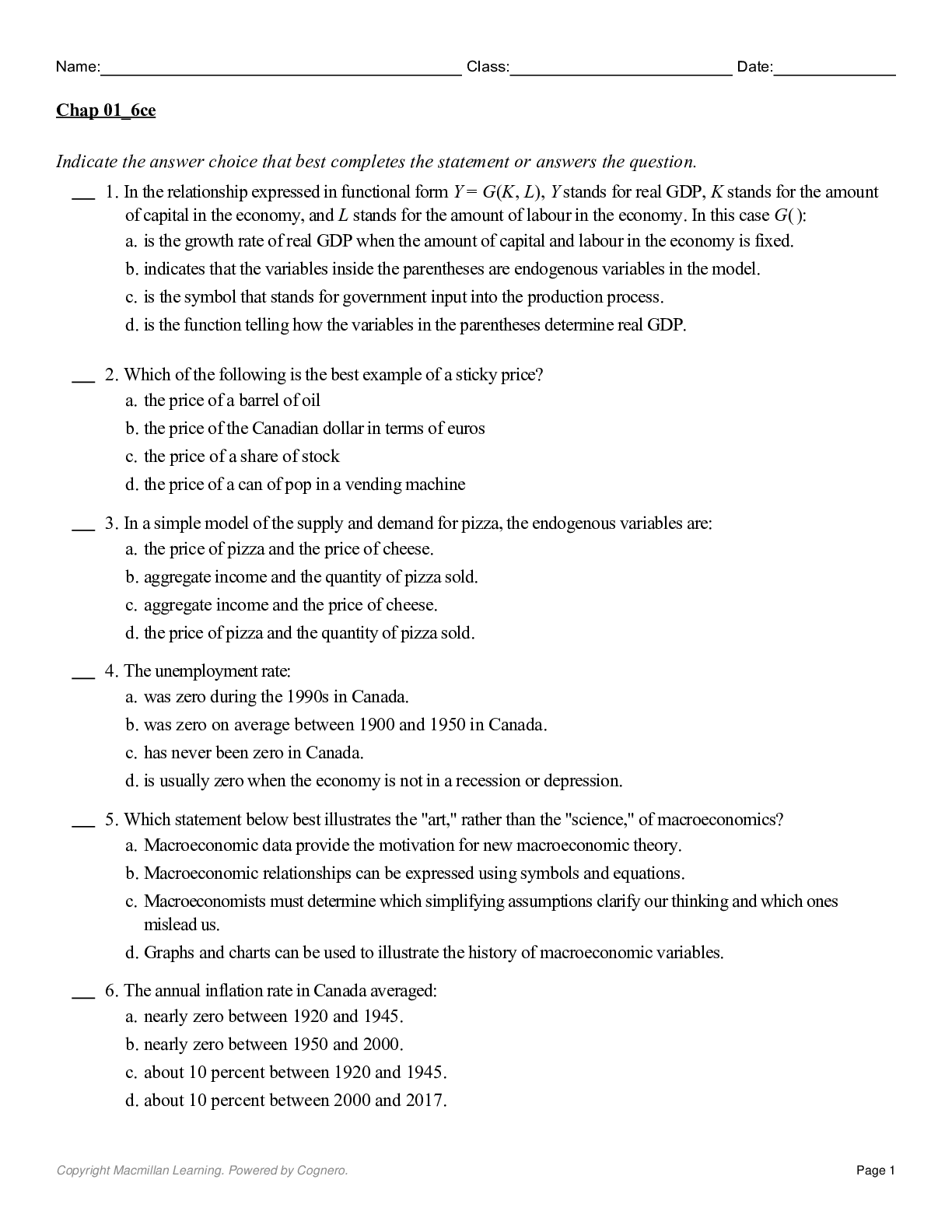
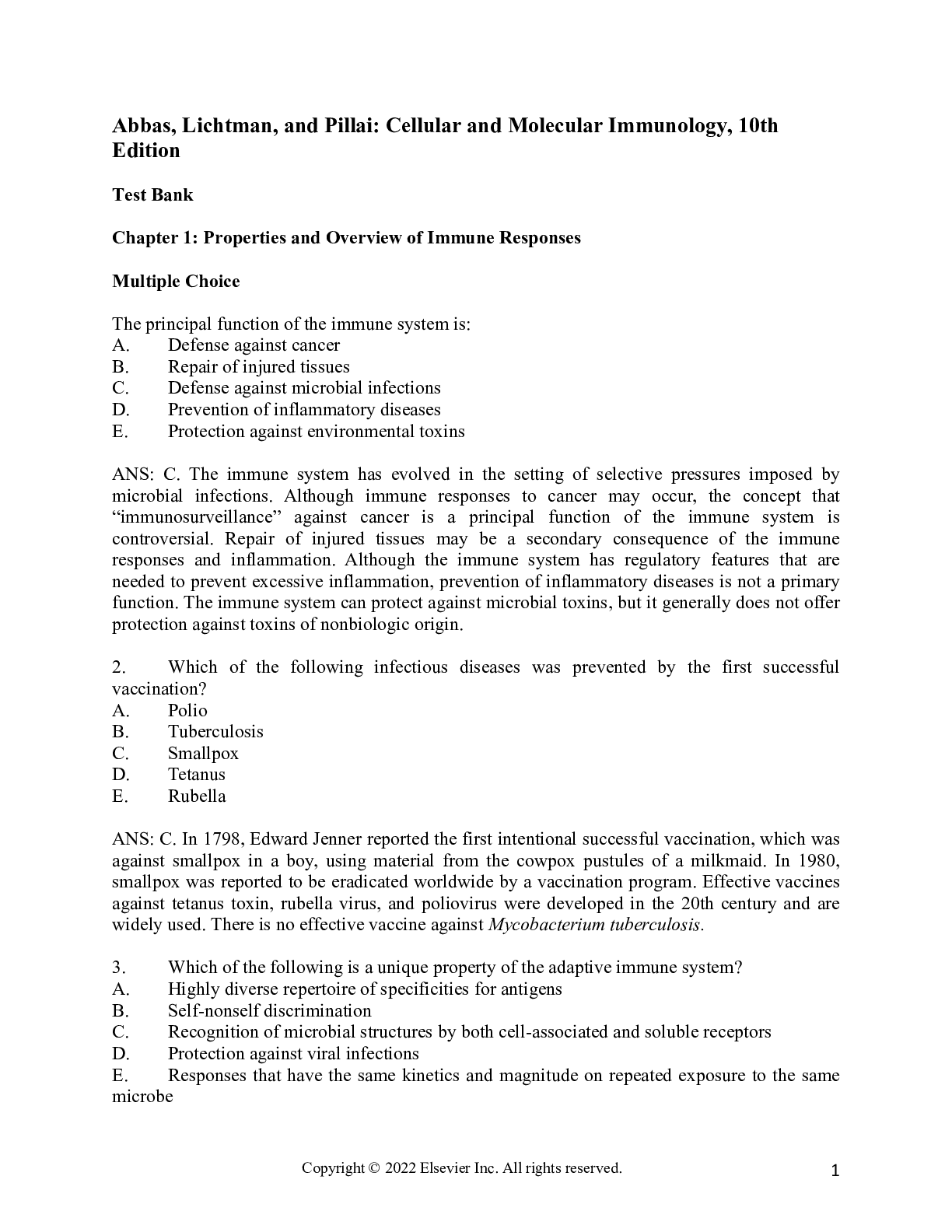
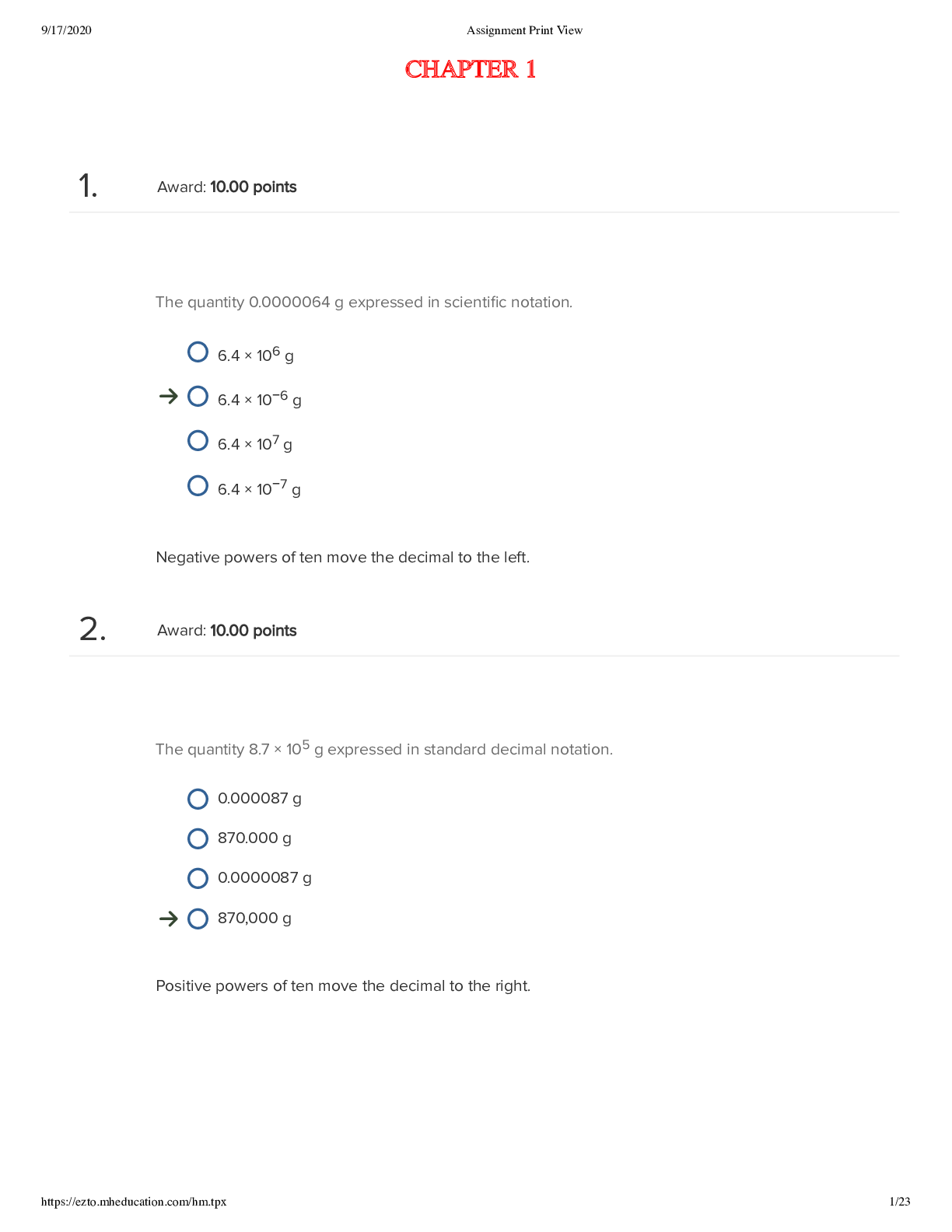
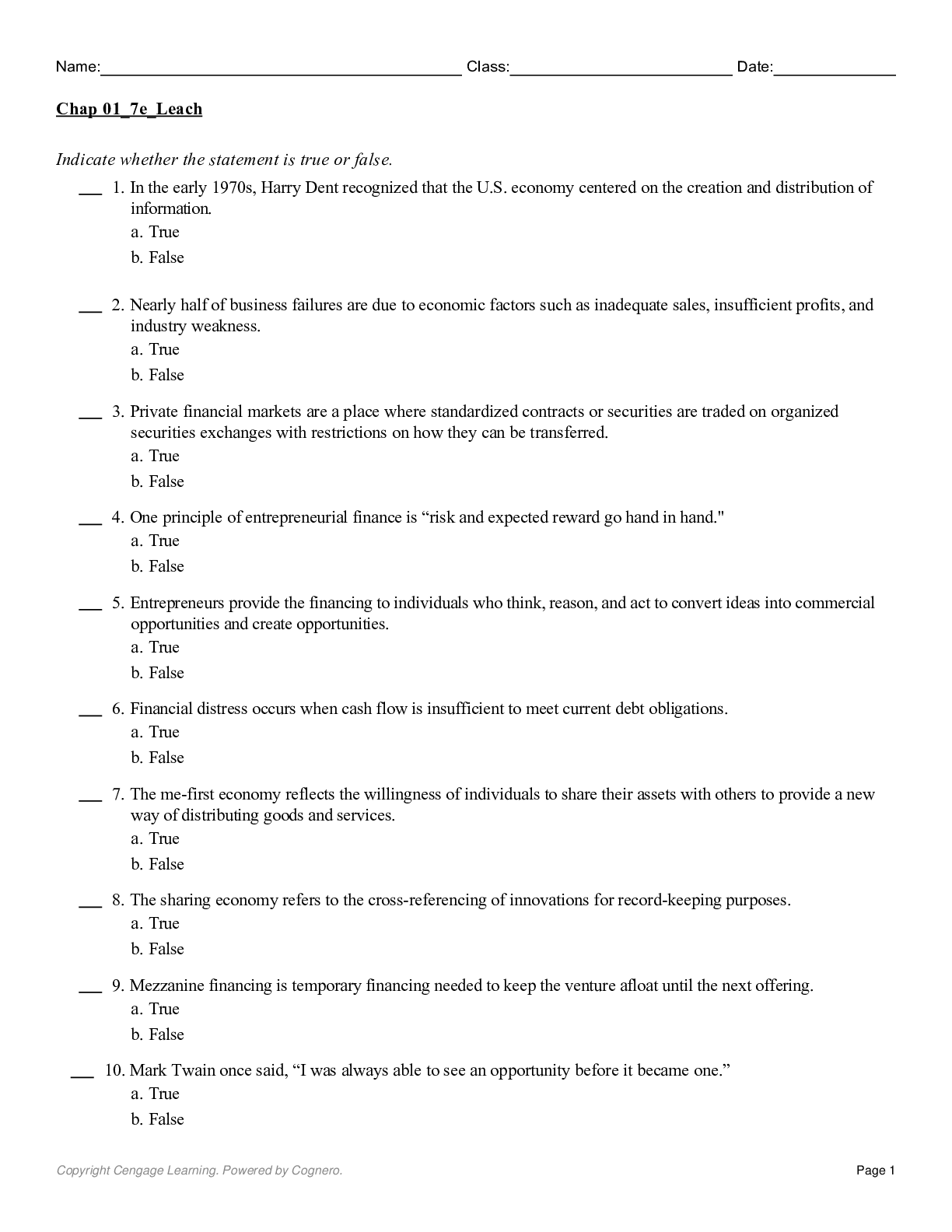
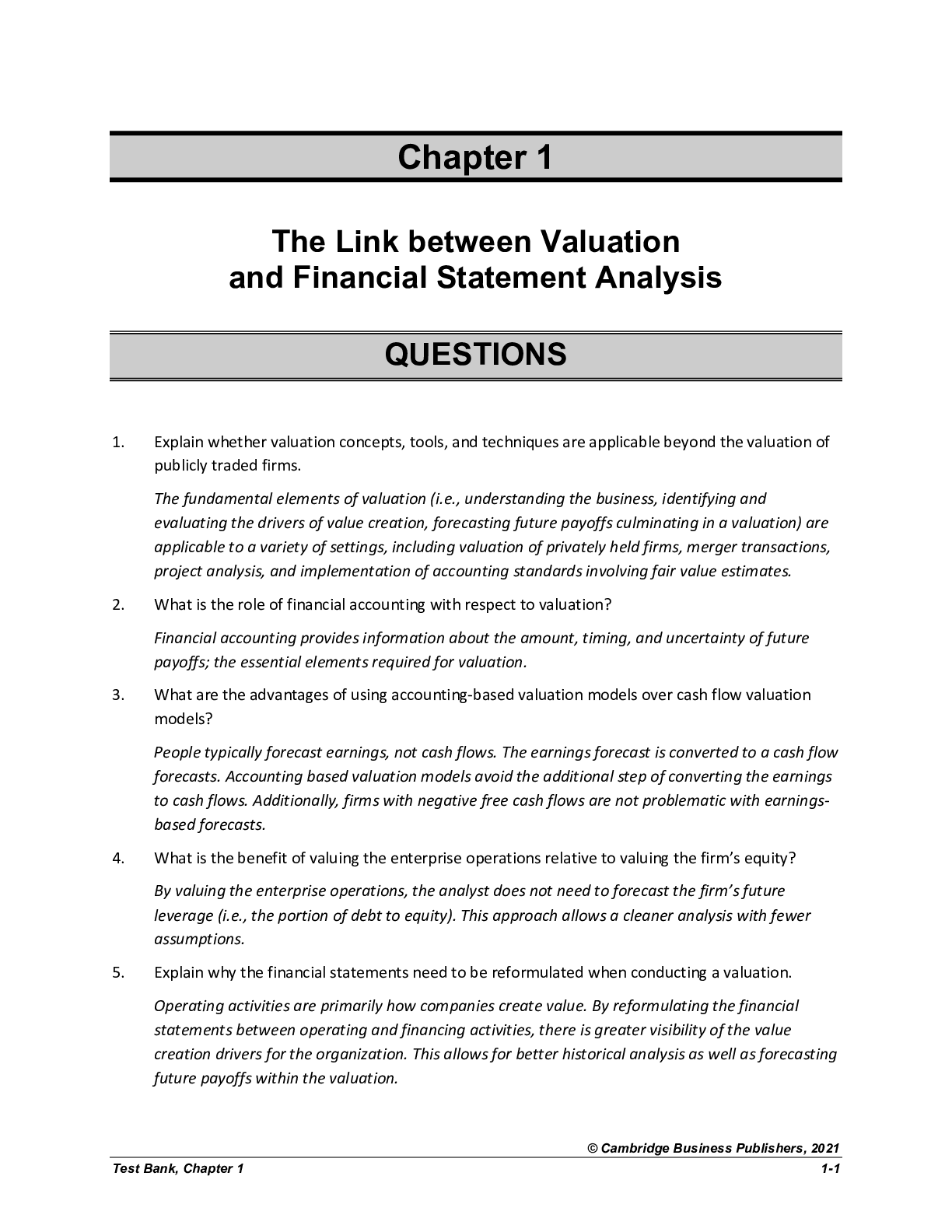

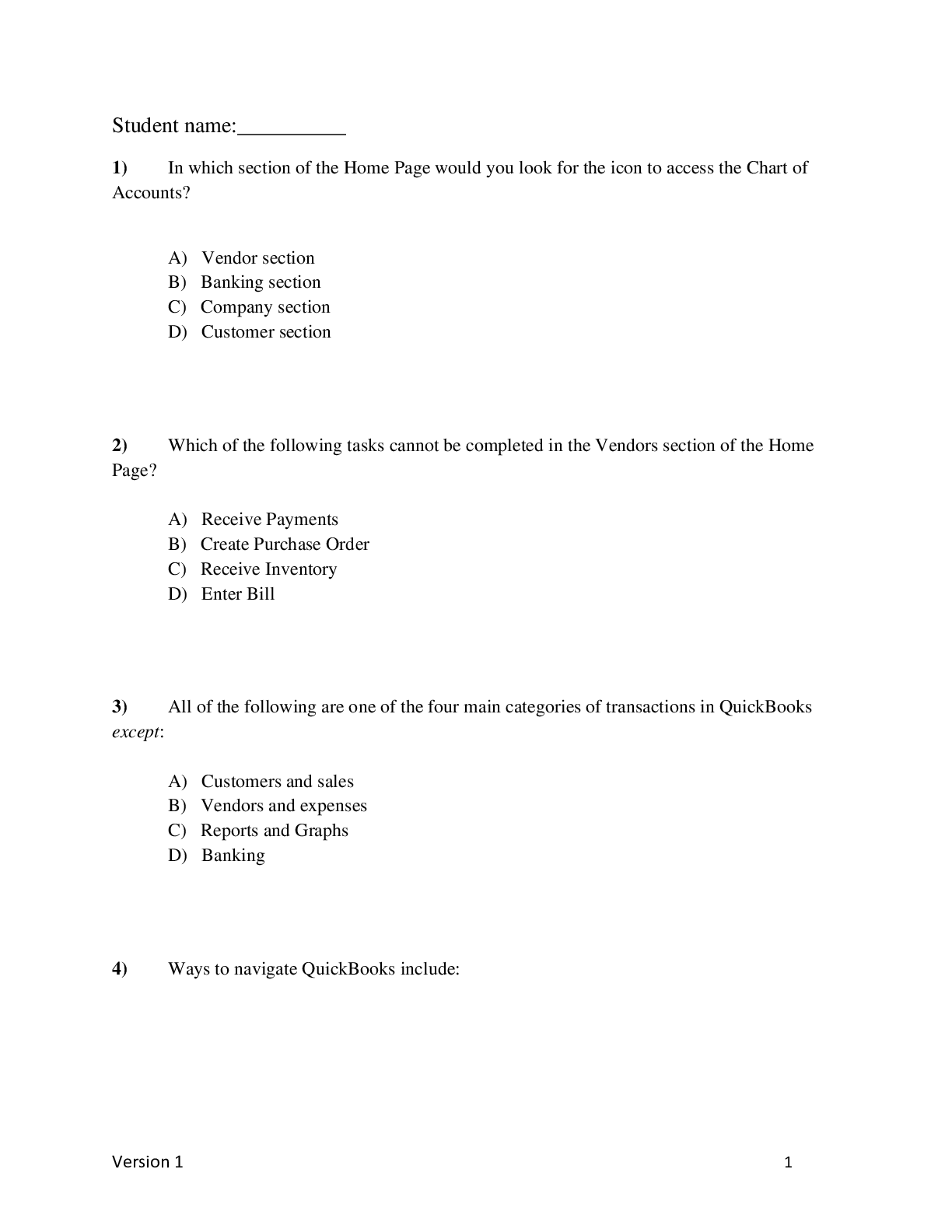
 TB.png)



